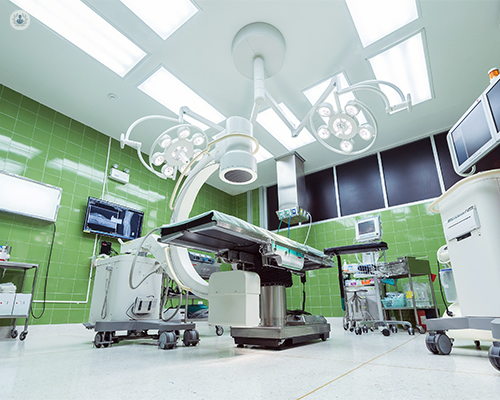


What is laparotomy?
Laparotomy is a surgical incision into the abdominal cavity. It is carried out to examine the organs and structures of the lower abdomen, such as the appendix, intestines, kidneys, liver, pancreas, gallbladder, bladder, uterus, etc. It is performed under general anaesthetic and may be merely exploratory or may include another surgical procedure if necessary, as in the case of intestinal obstruction, for example.
What does it involve?
A general surgeon or gastroenterologist makes an incision in the abdomen to examine the organs. If necessary, they will remove a sample of tissue (biopsy) for laboratory examination, especially in cases of suspected cancer. The surgeon will then use stitches or staples to close the incision.
Laparotomy is performed in the operating room under general anaesthetic.
Why is it performed?
Exploratory laparotomy is recommended when it is impossible to obtain an accurate diagnosis using medical tests such as X-rays and CT scans. It is useful for the diagnosis and treatment of medical problems such as:
- Ovarian cancer
- Ectopic pregnancies
- Endometriosis
- Gallstones
- Acute appendicitis
- Pancreatitis (inflammation of the pancreas)
- Diverticulitis (an inflammatory condition of the bowel)
- Intestinal perforation
- Scar tissue or adhesions in the abdomen
- Abscess or infection
Preparing for laparotomy
Before surgery, the specialist will study your medical history and tell you what medication you will not be able to take. They may also request various diagnostic tests to be performed in order to assess whether you can safely have surgery under anaesthetic.
You may need to follow a special diet rich in fibre and fluids, or even take laxatives to empty the bowels before the procedure to reduce the risk of bowel infection after surgery.
What do you feel during the procedure?
The procedure is painless since it is performed while you are asleep under general anaesthetic.
After the operation, you will stay in hospital for a few days, during which time the doctors will monitor your progress and make sure there is no infection, blood clots or any respiratory or intestinal problems.
The risk of blood clots forming must be monitored, as these could break off and result in a fatal vascular accident, such as a heart attack or a stroke.
Alternatives to laparotomy
The main alternative and advancement to laparotomy is laparoscopy, which is a less invasive technique that allows the specialist to examine the area using a camera and lighting system.
Laparoscopy is a safer procedure that presents less risk of complications or bleeding. It also requires a shorter hospital stay and post-operative period and is less painful. In addition, the scars resulting from laparotomy are larger and more visible. Laparoscopy is therefore used more often than laparotomy whenever possible.
